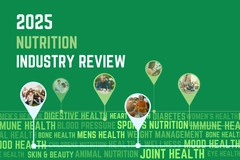
- Industry news
Industry news
- Category news
- Reports
- Key trends
- Multimedia
Multimedia
- Journal
- Events
- Suppliers
Suppliers
- Home
- Industry news
Industry news
- Category news
- Reports
- Key trends
- Multimedia
Multimedia
- Events
- Suppliers
Suppliers
“Hunger is not only about food”: Ukraine’s infrastructure damage threatens global nutrition security

26 Jul 2023 --- The war in Ukraine is driving food insecurity globally. With Russia’s recent withdrawal from the Black Grain Deal, experts warn that malnutrition will continue to increase, mainly among the world’s most vulnerable populations. At the same time, humanitarian organizations stress that there are sufficient commodities in the global market, but if politics, lack of humanitarian access and immediate funding hinder the process, these countries will be negatively affected.
“I’ve been saying it for at least one year now; we are in the last minute of the 11th hour,” Deepmala Mahla, vice president of humanitarian affairs at CARE, tells Nutrition Insight in an exclusive interview.
“There have been enough projections, warnings and alarm bells by the humanitarian community for over a year, but we are still waiting for donor communities or donor governments to step up and act immediately.”
“There’s no shadow of a doubt that Russia pulling out of the grain initiative would have a devastating impact on the food security and food insecurity in the world, which has already been at alarming levels since last year. When discussing food insecurity, we must highlight that we are talking of different levels.”
She details that some face malnutrition while others are on the brink of fatal starvation.
“The impact is primarily, as of now, on the global [food] commodity prices,” she explains. “However, when this agreement is not renewed, these prices are likely to continue their upward trajectory as we are already witnessing, but there are ways in which this can be mitigated.”
 Ruining infrastructure increases vulnerability in already vulnerable populations, Mahla says.Ukraines infrastructure and global nutrition
Ruining infrastructure increases vulnerability in already vulnerable populations, Mahla says.Ukraines infrastructure and global nutrition
The ongoing destruction of infrastructure in Ukraine and Russia’s withdrawal from the Black Grain initiative is expected to have significant implications for nutrition insecurity, particularly in vulnerable communities and women and girls.
Mahla says this may result in food price volatility and shift consumption toward lesser healthy alternatives, increasing malnutrition.
“When civilian infrastructure is damaged, especially in an active hostile situation, like in Ukraine, it poses challenges,” stresses Mahla. “Firstly, we do not have an accurate assessment of the level of damage for a start, right, because of accessibility and its ongoing continuation – we don’t even know how big the damage is.”
She further points out that when infrastructure is damaged, it affects people’s ability to send their children to school and also for people to access higher education.
“Educational services are basically about the future of not only the children but the young people making every effort to learn application skills, get into the economic workforce and become a productive part of the economy.”
Additionally, when water, sanitation and sewage services are affected, disease rates can increase. Ruining infrastructure, therefore, increases vulnerability in already vulnerable populations.
Not a shortage of solutions
Mahla details five solutions, starting with ensuring sufficient commodities in the global market exist and have the potential to stabilize prices in other grain-producing countries.
“This means that there’s a strong possibility that even with Russia’s withdrawal, there are other countries that can step in to meet the demand for wheat and other food,” she adds. Yet she emphasizes that this is only possible if politics cease to be an obstacle.
Secondly, she says that Russia, a country known for its substantial cheap wheat supply for exports, could intervene as well.
“Even when they withdraw from the Black Sea grain initiative, they [Russia] can continue to contribute to the global market with their affordable wheat offerings, helping to keep the price stable.”
Moving forward to local production, Mahla says we should increase local production of wheat and corn in African countries, using the existing land, soil and water..jpg) The issue is not a lack of food, as more food exists in the world than what is needed to feed the global population.
The issue is not a lack of food, as more food exists in the world than what is needed to feed the global population.
“African countries like Kenya and Ethiopia are predicted to experience higher wheat and codings in 2023 and 2024. So this increase in production, if we provide the right support, can offset the impact of this withdrawal and contribute to the food demands again.”
Furthermore, at least five EU countries [Bulgaria, Hungary, Poland, Romania and Slovakia] have halted Ukraine’s wheat export, Mahla says, because of the claims that the cheap exports from Ukraine were negatively affecting their local grain production. “These countries are trying to protect their local grain market and ensure price stability.”
Besides India, countries are not restricting rice exports, which could contribute to the commodity pool and keep prices stable.
“As devastating as this decision is, the global market must step up and live with its commitment to humanity. How is it acceptable in this century [that] people are dying because of hunger when the world is producing more than what is needed?” Mahla questions.
“If countries do not restrict exports, the commodities can be filled elsewhere.”
Not a shortage of food
Mahla affirms that the issue is not a lack of food, as more food exists in the world than what is needed to feed the global population.
“The distribution and the other crucial thing is humanitarian access, meaning the ability to reach the people in crises with the commodity,” she underscores. “We are talking about food here and the biggest driver of hunger in the world.”
“It’s not less production, it’s conflict.”
Earlier this year, the UN and the WHO stressed the impacts of conflict on acute malnutrition in Yemen, as 540,000 children and 12.9 million Yemenis were reported to be at a “direct risk of death.”
“So there are many regions in the world, such as parts of Afghanistan, Ethiopia, Syria and the list goes on. Even when there are supplies available, they are insufficient. Humanitarians cannot reach the people in need because of [resources] insecurity, but often because of restrictions by various actors who control the territory.”
“So, as I always say, hunger is not about food only.”
Food shortage, malnutrition and stunting may impact cognitive abilities and brain development and the risk of diseases. When millions of people cannot be accessed because of insecurity, people in critical conditions battling starvation and diseases are more vulnerable, explains Mahla.
“This affects the livelihood and the recovery of the market and the community. Many communities worldwide have strong community and family-level systems of supporting and relying on each other.
 “Communities know how to survive, it is the forces which are beyond their control which limit their ability,” stresses Mahla.“And this is where communities grow together. As they say, in Africa, it takes a village. So all these traditional systems of people supporting people are disturbed, becoming a vicious cycle.”
“Communities know how to survive, it is the forces which are beyond their control which limit their ability,” stresses Mahla.“And this is where communities grow together. As they say, in Africa, it takes a village. So all these traditional systems of people supporting people are disturbed, becoming a vicious cycle.”
Economic and societal recovery
Recovering time from a conflict depends on several factors, such as how long it has been ongoing and to what extent resources and communities have been depleted.
“Once the conflict is ended permanently, then the community, if it has the proper support in terms of resources such as guidance on smart agriculture techniques, climate-smart technologies and financial support to the local market, it [the recovery] should not take very long at least.”
“Let us remember that communities know how to survive, communities know how to survive, they have fed themselves and they have fed other villages, it is the forces which are beyond their control, which limit and hamper their ability.”
She adds that fair distribution of resources and ensuring the specific needs of women and girls are met are crucial.
Mahla details that “many times, the humanitarian crises worldwide do not get enough media coverage.” Recently, a report by the organization pointed out the mainstream media’s lack of including such crises as they were missing from the headlines.
She emphasizes the need to allocate resources and focus on flexible and predictable funding, as it sometimes comes too late.
“When we know these resources are available, we can hire people longer term, procure better and have a more efficient supply chain. So the biggest resource required is funding, raising the technical capacity and techniques, all those are also important, but funding is the key,” Mahla concludes.
By Beatrice Wihlander











